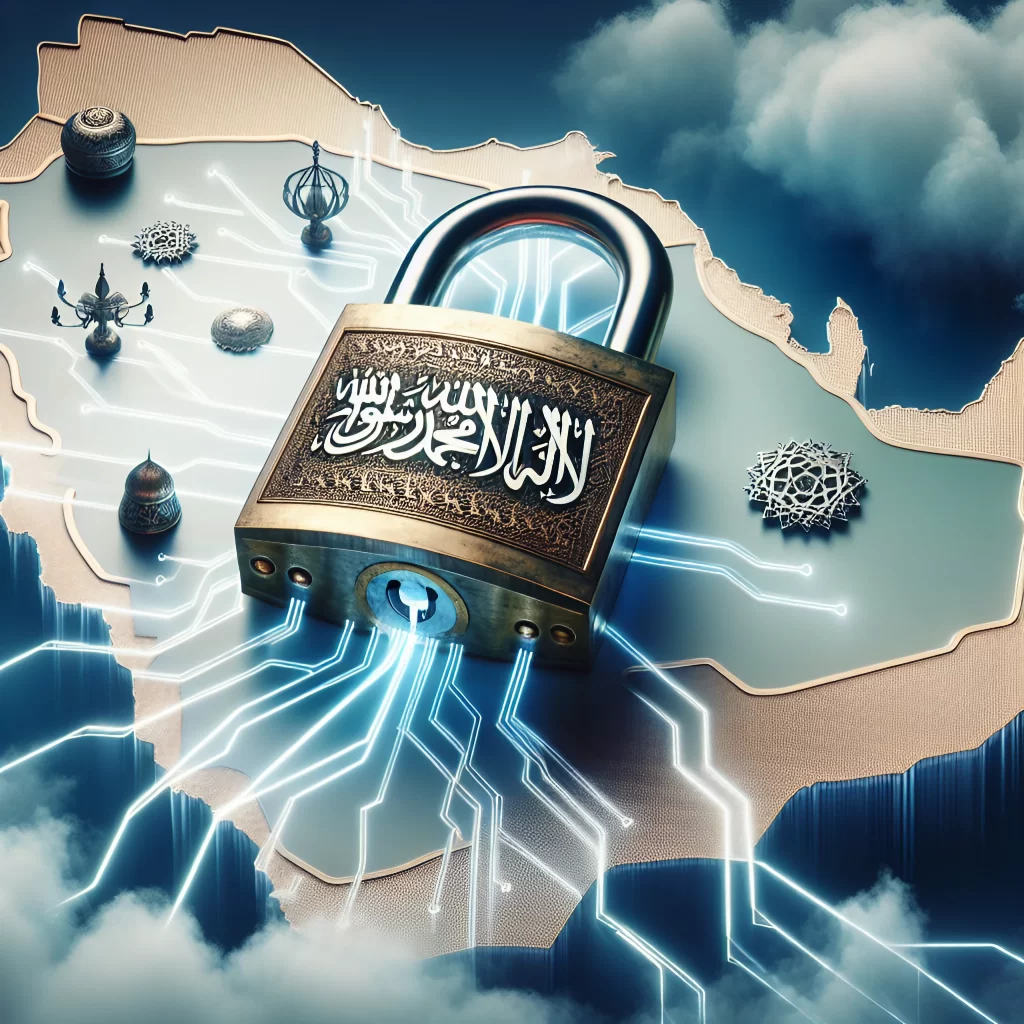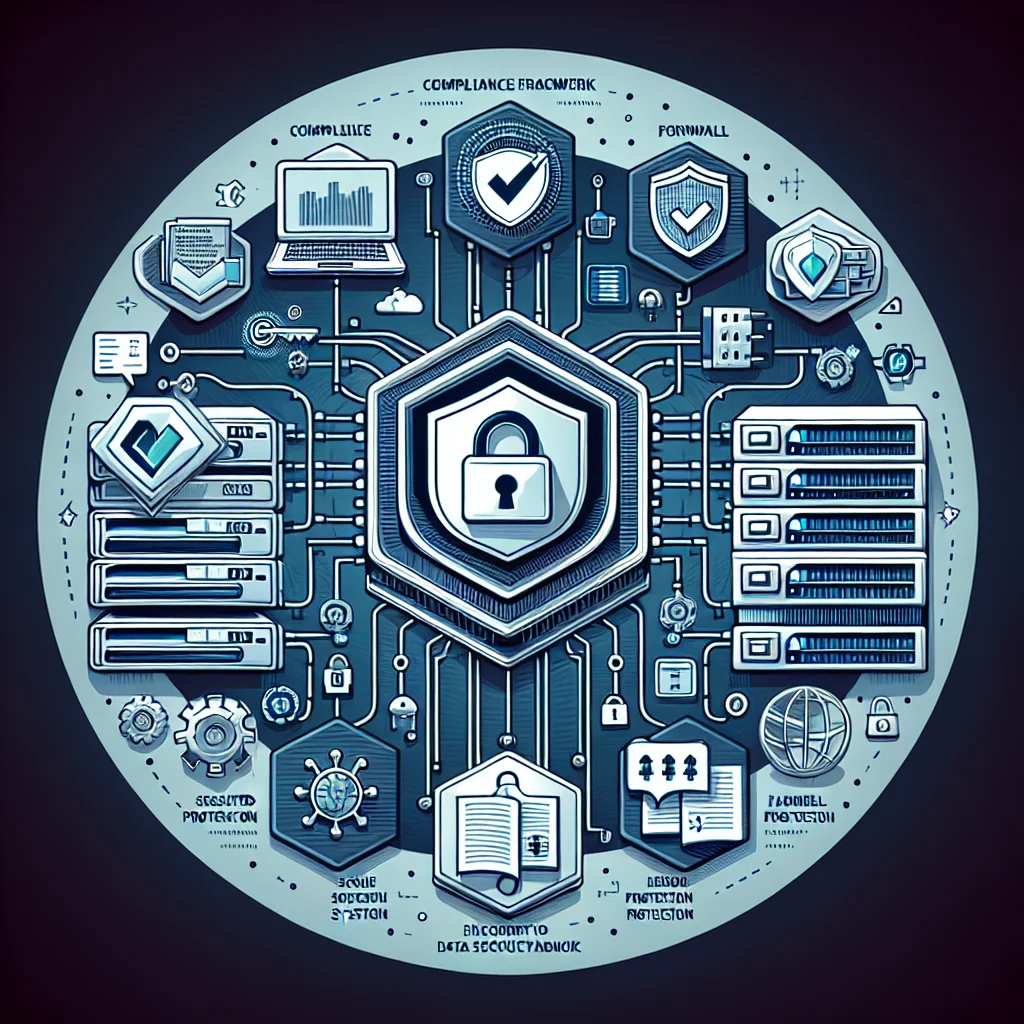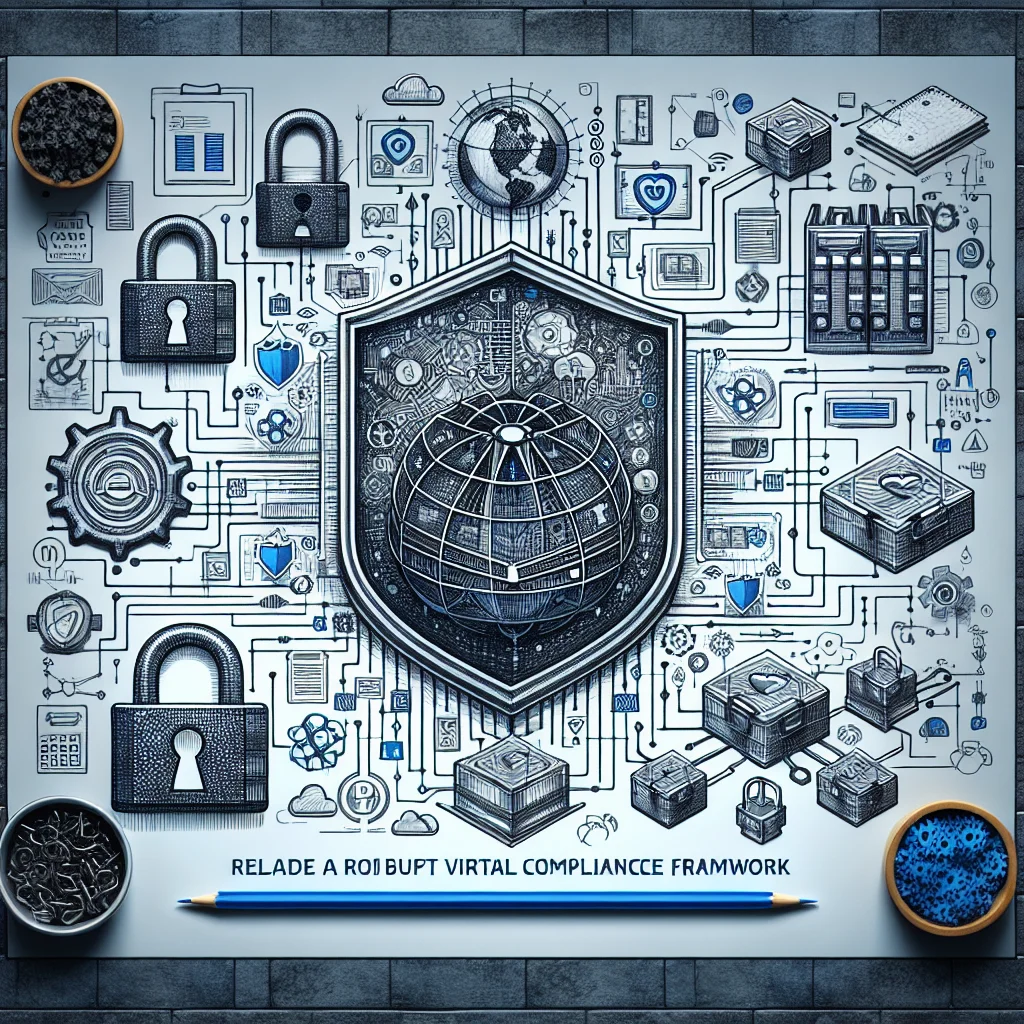In an era where digital transformation is accelerating at an unprecedented rate, cybersecurity has emerged as a critical concern for organizations worldwide. In Saudi Arabia, the National Cybersecurity Authority (NCA) has established a comprehensive strategy to fortify the nation’s cyber defenses. This article aims to provide an in-depth exploration of the NCA Cybersecurity Strategy, addressing frequently asked questions by Chief Information Security Officers (CISOs) and IT professionals. Our objective is to offer insights that help streamline compliance efforts and enhance organizational cybersecurity postures.
What is the NCA Cybersecurity Strategy?
The NCA Cybersecurity Strategy is a national initiative by Saudi Arabia’s National Cybersecurity Authority to protect the nation’s digital infrastructure. It encompasses a series of policies, frameworks, and guidelines designed to enhance cybersecurity resilience across public and private sectors.
Who is it for?
The strategy is aimed at all entities within Saudi Arabia, including government agencies, private sector organizations, and critical infrastructure operators. The goal is to create a unified approach to cybersecurity, ensuring that all entities adhere to the same high standards of security.
Why is it Important?
In the Middle East, and particularly in Saudi Arabia, the increasing reliance on digital technologies has made cybersecurity a top priority. The NCA Cybersecurity Strategy aims to:
- Protect sensitive data and critical infrastructure.
- Enhance national security.
- Foster a secure and resilient cyberspace.
- Promote cybersecurity awareness and education.
Frequently Asked Questions by CISOs
1. What are the key components of the NCA Cybersecurity Strategy?
The strategy includes policies, frameworks, and guidelines focused on various aspects of cybersecurity, such as risk management, incident response, and regulatory compliance.
2. How does the NCA Cybersecurity Strategy align with international standards?
The NCA Cybersecurity Strategy aligns with international standards such as ISO/IEC 27001, NIST, and PCI DSS, ensuring that organizations in Saudi Arabia can achieve global best practices in cybersecurity.
3. What are the specific requirements for compliance with the NCA Cybersecurity Strategy?
Compliance requirements vary by industry but generally include risk assessments, incident response plans, continuous monitoring, and regular audits.
4. What role does the NCA play in enforcing the strategy?
The NCA is responsible for overseeing the implementation of the strategy, conducting audits, and imposing penalties for non-compliance.
5. Are there any specific guidelines for critical infrastructure protection?
Yes, the NCA has established guidelines specifically for protecting critical infrastructure sectors such as energy, healthcare, and finance.
6. How does the strategy address emerging threats?
The strategy emphasizes the importance of continuous monitoring and threat intelligence to stay ahead of emerging threats.
7. What are the training and awareness requirements under the strategy?
Organizations are required to conduct regular training sessions and awareness programs to ensure that employees are well-versed in cybersecurity best practices.
8. How can organizations prepare for an NCA audit?
Organizations should conduct internal audits, maintain detailed documentation, and ensure that all controls are effectively implemented.
9. Are there any penalties for non-compliance?
Yes, organizations that fail to comply with the NCA Cybersecurity Strategy may face fines, sanctions, or other penalties.
10. What is the role of third-party vendors in the NCA Cybersecurity Strategy?
Organizations must ensure that third-party vendors adhere to the same cybersecurity standards and conduct regular assessments of their security posture.
11. How does the strategy address data privacy concerns?
The NCA Cybersecurity Strategy includes provisions for data privacy, ensuring that organizations implement measures to protect sensitive information.
12. What are the reporting requirements for cybersecurity incidents?
Organizations are required to report cybersecurity incidents to the NCA within a specified timeframe and provide regular updates on the incident response process.
13. How does the strategy support digital transformation initiatives?
The strategy promotes secure digital transformation by providing guidelines for integrating cybersecurity into digital initiatives.
14. Are there any incentives for organizations that comply with the strategy?
While there are no direct incentives, organizations that comply with the strategy benefit from enhanced security, reduced risk, and improved trust with stakeholders.
15. What resources are available to help organizations implement the strategy?
The NCA provides a range of resources, including guidelines, toolkits, and training programs, to support organizations in implementing the strategy.
16. How does the strategy address supply chain security?
The strategy includes provisions for securing the supply chain, requiring organizations to assess and mitigate risks associated with third-party vendors.
17. What are the requirements for incident response under the strategy?
Organizations must develop and implement incident response plans, conduct regular drills, and report incidents to the NCA.
18. How does the strategy promote collaboration between public and private sectors?
The strategy encourages collaboration through information sharing, joint exercises, and public-private partnerships.
19. How can organizations stay updated on changes to the strategy?
Organizations should regularly review NCA publications, attend industry conferences, and participate in NCA-led initiatives.
20. What is the timeline for achieving full compliance with the strategy?
The timeline for compliance varies by organization but generally requires a phased approach, with full compliance expected within a few years of the strategy’s release.
21. How can organizations assess their current cybersecurity posture?
Organizations can conduct a comprehensive cybersecurity assessment that includes a review of current policies, procedures, security technologies, and staff training. Engaging third-party experts for an external audit can also provide valuable insights.
22. What technology solutions are recommended under the NCA Cybersecurity Strategy?
The strategy recommends implementing advanced security technologies such as firewalls, intrusion detection systems, endpoint protection solutions, and encryption tools to safeguard sensitive data and infrastructure.
23. How often should organizations update their cybersecurity policies?
Organizations should review and update their cybersecurity policies at least annually or whenever significant changes occur in operations, technology, or regulatory requirements.
24. Are there specific criteria for selecting cybersecurity vendors?
Organizations are urged to evaluate potential vendors based on their adherence to cybersecurity standards, their track record, product offerings, and their compliance with the NCA Cybersecurity Strategy.
25. What support does the NCA provide for incident response?
The NCA offers guidance on establishing effective incident response protocols and may provide technical support during major incidents to help organizations manage and mitigate threats.
26. What is the importance of cybersecurity awareness training?
Cybersecurity awareness training is crucial for equipping employees with the knowledge to identify and respond to potential threats, thereby reducing risk and fostering a culture of security within the organization.
27. How can organizations measure the effectiveness of their cybersecurity programs?
Organizations can measure effectiveness through regular assessments, incident response metrics, employee training evaluations, and by benchmarking against industry standards and best practices.
28. Are there specific cybersecurity frameworks or standards that organizations should follow?
Yes, organizations are encouraged to align their cybersecurity practices with established frameworks such as the NIST Cybersecurity Framework, ISO/IEC 27001, or the CIS Controls to enhance their security posture.
29. What are the consequences of a data breach under the NCA Cybersecurity Strategy?
Consequences may include legal penalties, reputational damage, financial loss, and mandatory reporting to regulatory bodies, which can further impact the organization’s operations.
30. How does the strategy address remote working security concerns?
The strategy includes guidelines for securing remote work environments, emphasizing the use of secure connections, robust authentication methods, and the importance of training remote employees on security best practices.
31. What roles do employees play in maintaining cybersecurity?
Employees play a critical role in maintaining cybersecurity by adhering to company policies, participating in training programs, and being vigilant about identifying and reporting suspicious activities.
32. How can organizations protect their sensitive data?
Organizations can protect sensitive data through a combination of encryption, access controls, data loss prevention technologies, and regular audits of data handling practices.
33. What should organizations do if they suspect a data breach?
If a data breach is suspected, organizations should immediately initiate their incident response plan, secure affected systems, notify stakeholders, and report to the NCA as required by the strategy.
34. How important is multi-factor authentication?
Multi-factor authentication (MFA) is essential as it adds an extra layer of security, making it significantly more difficult for unauthorized users to gain access to sensitive systems or data.
35. What kind of cybersecurity insurance should organizations consider?
Organizations should consider cybersecurity insurance that covers liability for data breaches, business interruption, and crisis management expenses, tailored to their unique risk exposure and operational needs.
Common Controls Between Frameworks
One of the key advantages of the NCA Cybersecurity Strategy is its alignment with international standards, which allows organizations to streamline their compliance efforts. Here are some common controls between the NCA Cybersecurity Strategy, ISO/IEC 27001, and PCI DSS:
Risk Management
- ISO/IEC 27001: Clause A.6.1.2 – Information security risk assessment.
- PCI DSS: Requirement 12.2 – Develop a risk assessment process.
Access Control
- ISO/IEC 27001: Clause A.9.1.2 – Access control policy.
- PCI DSS: Requirement 7.1 – Limit access to system components and cardholder data.
Incident Response
- ISO/IEC 27001: Clause A.16.1.1 – Management of information security incidents and improvements.
- PCI DSS: Requirement 12.10 – Implement an incident response plan.
Continuous Monitoring
- ISO/IEC 27001: Clause A.12.4.1 – Event logging.
- PCI DSS: Requirement 10.6 – Review logs and security events for all system components to identify anomalies or suspicious activity.
Data Protection
- ISO/IEC 27001: Clause A.18.1.3 – Protection of records.
- PCI DSS: Requirement 3 – Protect stored cardholder data.
NCA Common Controls with Other Frameworks
The NCA Cybersecurity Strategy incorporates various controls that align with other established cybersecurity frameworks, facilitating a cohesive approach to risk management and compliance. Below are specific common controls, their corresponding clause numbers in other frameworks, and NCA CCC clause numbers:
Governance and Compliance
- NCA CCC: Clause 1.1 – Governance Framework
- ISO/IEC 27001: Clause A.5.1 – Information security policies.
- PCI DSS: Requirement 1.1 – Establish and maintain a security policy.
Asset Management
- NCA CCC: Clause 2.1 – Asset Inventory
- ISO/IEC 27001: Clause A.8.1.1 – Inventory of assets.
- PCI DSS: Requirement 2.4 – Maintain an inventory of system components.
Vulnerability Management
- NCA CCC: Clause 3.1 – Vulnerability Assessment
- ISO/IEC 27001: Clause A.12.6.1 – Control of technical vulnerabilities.
- PCI DSS: Requirement 6.1 – Establish a process to identify security vulnerabilities.
Training and Awareness
- NCA CCC: Clause 4.1 – Security Training
- ISO/IEC 27001: Clause A.7.2.2 – Information security awareness, education, and training.
- PCI DSS: Requirement 12.6 – Implement a security awareness program.
Physical and Environmental Security
- NCA CCC: Clause 5.1 – Physical Security Controls
- ISO/IEC 27001: Clause A.11.1.1 – Secure areas.
- PCI DSS: Requirement 9.1 – Physically secure all systems.
This alignment not only aids compliance efforts but also strengthens an organization’s overall security posture by encouraging the adoption of best practices across multiple frameworks.
Middle East Specific Considerations
When implementing the NCA Cybersecurity Strategy, organizations in the Middle East should consider the following region-specific factors:
Cultural Sensitivity
Understanding and respecting cultural norms and values is crucial when implementing cybersecurity measures. This includes language preferences, communication styles, and local regulations.
Regulatory Environment
The regulatory landscape in the Middle East is constantly evolving. Organizations must stay updated on local laws and regulations to ensure compliance with both national and regional requirements.
Talent Shortages
There is a growing demand for cybersecurity professionals in the Middle East. Organizations should invest in training and development programs to build a skilled cybersecurity workforce.
Collaborations and Partnerships
Public-private partnerships and collaborations with international organizations can provide valuable resources and expertise to enhance cybersecurity efforts.
Conclusion
The NCA Cybersecurity Strategy represents a significant step forward in strengthening Saudi Arabia’s cybersecurity posture. By aligning with international standards and focusing on key areas such as risk management, access control, and incident response, the strategy provides a comprehensive framework for protecting digital assets.
If you’re a CISO or IT professional looking to streamline your compliance efforts and enhance your organization’s cybersecurity posture, consider partnering with an automated compliance platform such as ComplyHawk, a specialist in this framework and region. Together, we can build a more secure and resilient digital future.



